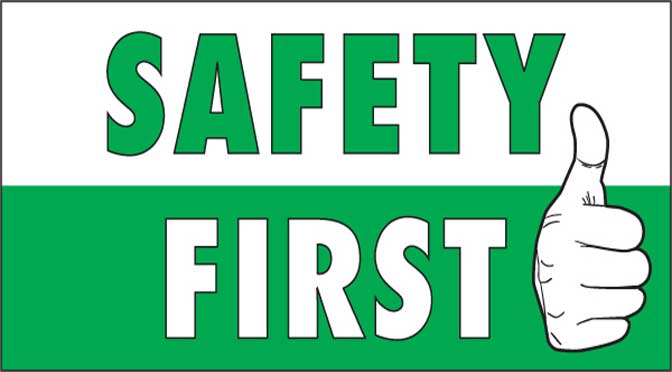Precision Cutting & Coring Safety Spotlight
For 2016, Safety Week occurs from May 2nd thru May 6th. While it’s true that safety is a constant and year round priority it’s also true that Safety Week is beneficial in that it works to increase safety awareness.
In light of Safety week this safety spotlight blog post will be addressing the new O.S.H.A. regulations which pertain to worker exposure to respirable crystalline silica. We are going to take a look at the issues behind these regulations, what industries are impacted, steps needed for compliance and finally some helpful online resources.
Issues Driving The New OSHA Respirable Crystalline Silica Regulations
Going back to the birth of OSHA in 1971, there were regulations designed to address worker safety in terms of exposure to respirable crystalline silica. These initial regulations were driven by worker fatalities which were connected to data going all the way back to the 1930’s.
When we look at the dates it becomes apparent that the existing rules have become outdated. The initial rules from 1971 were finalized for update in the fall of 2013. This means that more than four decades have passed and so an update was truly necessary.
Most importantly, the greatest single underlying issue here is what is in the best interest of the workers. Each year more than 2 million workers are exposed and this exposure can lead to a host of serious health problems such as lung cancer, silicosis, chronic obstructive pulmonary disease and kidney disease.
Once these new regulations take full effect the best estimates predict that more than 600 lives will be saved per year and more than 900 new cases of silicosis will be eliminated per year. In terms of value, saving this many lives and preventing this much illness is of immense importance and value.
Industries Impacted By The New OSHA Respirable Crystalline Silica Regulations
In simplest terms, these regulations will apply to any industry where workers are exposed to these airborne particles. If you have people who cut, crush or grind materials containing silica you are effected. Also included are other industry operations like brick fracking, brick making and foundries.
You should also understand that your inclusion does not necessarily mean that you must have workers doing these tasks but rather what matters is if they are exposed. In other words let’s say you have a carpenter installing wood framing and he/she does not cut, crush or grind material containing silica and yet there is another trade in close proximity that is putting silica in the air – in this instance it will be necessary for you to provide proper protection for that carpenter.
Complying With The New OSHA Respirable Crystalline Silica Regulations
Hopefully, you either have a safety expert on-staff or you have hired the services of one. In either case get with your safety advisor and find out what steps should be taken to be fully compliant. If you do not have access to a safety expert you should take time to fully study all of the new regulations.
The most critical elements you should become aware of include but are not limited to:
- The maximum permissible exposure limit for respirable crystalline silica is 50 micrograms per cubic meter of air, averaged over an eight hour shift.
- You must use engineering controls like water and/or ventilation to limit worker exposure at or below the required limit.
- If you cannot achieve the standards via engineering controls you must provide respirators.
- You must limit worker access to high exposure areas.
- You must develop a written exposure control plan.
- You must provide medical exams to highly exposed workers and give them information about their lung health.
- You must train and educate workers on silica risks and how to limit their exposure.
- For construction you must be fully compliant by June 23, 2017.
- For general industry, maritime and fracking you must be fully compliant by June 23, 2018.
Online Resources For The New OSHA Respirable Crystalline Silica Regulations
Hopefully, you either have a safety expert on-staff or you have hired the services of one. In either case get with your safety advisor and find out what steps should be taken to be fully compliant. If you do not have access to a safety expert you should take time to fully study all of the new regulations.
The most critical elements you should become aware of include but are not limited to:
- Get a free OSHA consultation at your location.
- You can submit questions to OSHA.
- You can study the new regulations.
- View and/or download the construction fact sheet.
- View and/or download an overview of the new regulations.
- View and/or download the FAQ’s.
Let’s Put Safety First!


Write a Comment